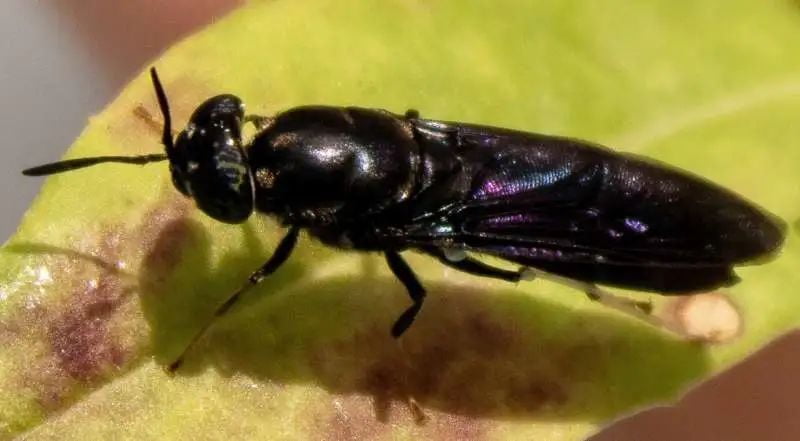Existing bio-based biodegradable materials are generally based on corn, sugar cane, etc., but they can be used as food or fuel as well. Imagine utilizing insects as a source of chemicals to create plastics that will later biodegrade with the help of the same insects. The concept is closer to reality than you might think. At the fall meeting of the American Chemical Society (ACS), researchers described their progress to date, including the isolation and purification of insect-derived chemicals and their conversion into functional bioplastics.

The black water fly is a good source of chemicals for making bioplastics
"For 20 years, my team has been working on ways to convert natural products, such as glucose from sugarcane or trees, into degradable, digestible polymers that don't persist in the environment," said Dr. Karen Woolley, lead researcher on the project. "But these natural products are resources taken from food, fuel, construction and transportation." So Woolley began looking for alternative sources without these competing applications. Her colleague, Dr. Jeffrey Tomberlin, suggested that she could use the waste left behind by farming black water flies, an expanding industry he has been helping to develop.
The larvae of these flies contain many proteins and other nutritive compounds, and thus more and more immature insects are being reared as animal feed and consumed as waste. However, the adults have a short life span at the end of the breeding period and are then discarded. At Tomberlin's suggestion, the adult carcasses became the Woolley team's new raw material. Cassidy Tibbetts, a graduate student in Woolley's lab at Texas A&M University, said, "We're turning trash into something useful."
When Tibbetts examined the dead flies, she determined that chitin was the main ingredient. This non-toxic, biodegradable, sugar-based polymer strengthens the shells or exoskeletons of insects and crustaceans. Producers have extracted chitin from shrimp and crab shells for a variety of uses, and Tibbetts has been using similar techniques to extract and purify chitin from insect carcasses using ethanol rinsing, acid demineralization, alkaline deproteinization, and bleach decolorization.
She says her chitin powder may be purer because it doesn't have the yellowish color and chunkiness of traditional products. She also noted that getting chitin from flies could avoid concerns about allergies to certain seafood. Some other researchers have isolated chitin or proteins from fly larvae, but Woolley said her team is the first she knows of to extract chitin from discarded adult flies, which, unlike larvae, are not used as feed.
While Tibbetts continues to improve the extraction technique, another graduate student in Woolley's lab, Hongming Guo, has been converting purified fly chitin into a similar polymer called chitosan. He did this by stripping the acetyl group of the chitin. This exposes the chemically reactive amino groups that can be functionalized and then crosslinked. These steps transform chitosan into useful bioplastics such as highly absorbent hydrogels, which are 3D polymer networks that can absorb water.
Hongming Guo has invented a hydrogel that can absorb 47 times its weight in water in one minute. Wooley (Wooley) said the product could potentially be used in agricultural soils to capture floodwater and then slowly release water in subsequent droughts. "In Texas, we're constantly in flood or drought situations," she explains, "so I've been trying to figure out how to make a highly absorbent hydrogel to solve that problem." Because the hydrogel is biodegradable, she says, it should gradually release its molecular components as nutrients for the crop.
Next, the team will begin a project to break down chitin into the monomer glucosamine. These small sugar molecules will then be used to make bioplastics, such as polycarbonate or polyurethane, which are traditionally made from petrochemicals. The black water fly also contains many other useful compounds that the group plans to use as starting materials, including proteins, DNA, fatty acids, lipids and vitamins.
Products made from these chemical building blocks can be degraded or digested when discarded, so they don't exacerbate the current plastic pollution problem. Woolley's vision for the process would align with the concept of a sustainable circular economy: "Ultimately, we want the insects to use the waste plastics as a food source, and then we'll harvest them again and collect their components to make new plastics," she says. "So not only are the insects the source, but they will also 'consume' the waste plastic."

